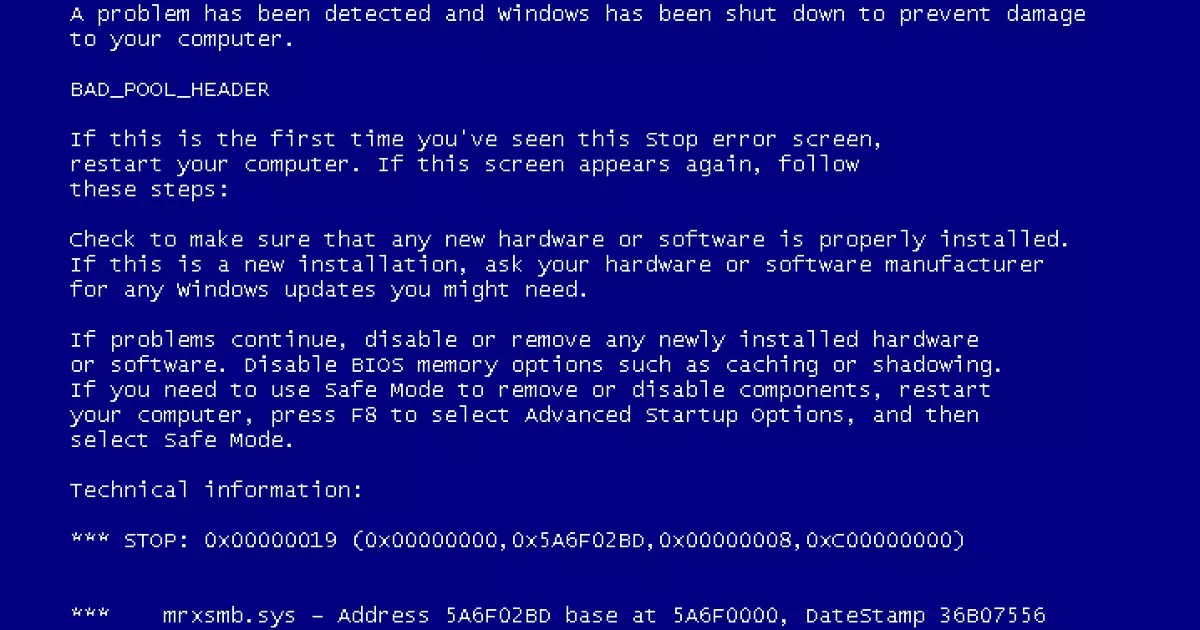In the expansive theater of technology, there are few shared experiences that unite users across the globe quite like the infamous blue screen of death (BSOD). It’s not merely an error message; it’s a definitive moment—a digital wreck that momentarily halts our hustle and bustle, leading to a universal shout of frustration. In a peculiar way, this collective outpouring of despair can be likened to a bizarre ritual reminiscent of concert-goers yelling “bollocks” at the UK’s Reading music festival. It’s the kind of shared chaos that solidifies community, igniting laughter amidst anguish. However, this experience is not merely a nostalgic nod; it’s also significant to examine how such moments shape our relationship with technology.
During Microsoft’s recent announcement of the transition from the BSOD to the black screen of death (BlackSOD), one can’t help but reflect on the implications of such a shift. The decision to evolve the design was described as an attempt to provide clarity. Yet, it raises an essential question: does replacing one form of technological failure with another truly offer any more solace to the aggrieved user?
The Aesthetic Shift in Error Messaging
The black screen, described as cleaner and more informative, encourages an exploration into how visuals interact with user emotions. David Weston, Microsoft’s VP of enterprise and OS security, emphasized the need for clearer communication about errors to mitigate disruption. This endeavor showcases a growing awareness about user experience but falls short of addressing a more profound concern that transcends aesthetics: the emotional impact of tech failures. Simply rebranding and redesigning an error message doesn’t amend the underlying reality of technological dependence—a reality that often leaves users feeling disoriented and angry.
The emotional weight cloaked in the euphemistic terms of “resilience” and “minimizing disruption” almost feels like a corporate band-aid over gaping wounds. While navigating through the complexities of modern technology, organizations must confront the uncomfortable truth that failures will inevitably occur. The attempt to reduce the emotional fallout with sleek interfaces might resonate, but it disregards the tangible frustration experienced by users who merely seek to complete their tasks without disruption.
Learning from the Past: The Cultural Influence of Tech Failures
The BSOD has been a familiar companion in the ever-advancing landscape of personal computing for over four decades. Since its inception in 1985, the blue screen’s pervasive presence across various computing systems has influenced pop culture, sparking the creation of memes and humorous anecdotes within gaming communities. Similarly, variants like the Xbox 360’s red ring of death offer not only a technical breakdown but also an emotional narrative—a fixation on the personal and social aspects of technology’s flaws.
This cultural conversation surrounding technology’s failures isn’t unique to Microsoft. The gaming industry, for example, has seen its share of catastrophic errors, such as the Amiga’s Guru Meditation Error and Apple’s Sad Mac. However, the poignancy of the blue screen remains unmatched, serving as a point of connection among a diverse range of users, echoing the collective frustrations we weave as we navigate the growing complexity of digital systems.
Corporate Accountability in the Age of Glitches
Yet, in the broader narrative of technology, it’s naive to dismiss the implications surrounding corporate responsibilities. In recent months, Microsoft has not only pivoted technically but has also faced scrutiny over ethical decisions, including supplying AI technology for military applications. Coupled with major layoffs, users are left to grapple with the sentiment that behind the veneer of polished software design, human consequences remain under the umbrella of corporate decision-making.
The company’s earnings paint a picture of prosperous growth amid these tumultuous shifts. Earning over $88 billion paints a stark contrast against the backdrop of layoffs, raising the question of whether these technological transformations are rooted in a desire to enrich user experience or simply focused on bolstering profit margins.
The transition from blue screens to black screens embodies more than a mere change in color; it encapsulates the complexities of our relationship with technology. Whether we travel through hiccups or glimmers of hope, one thing is certain: the journey of navigating tech failures is as much about community as it is about code.


Leave a Reply